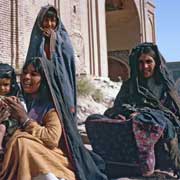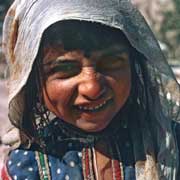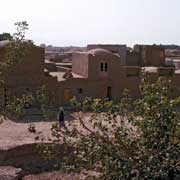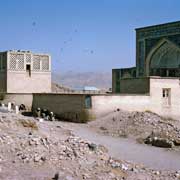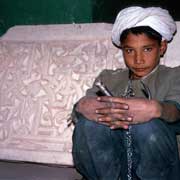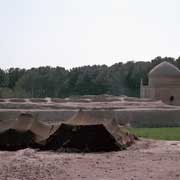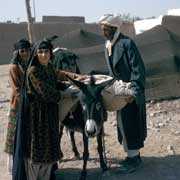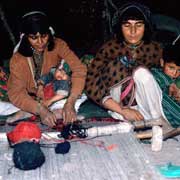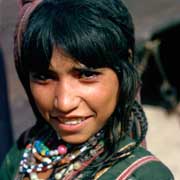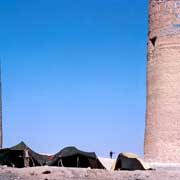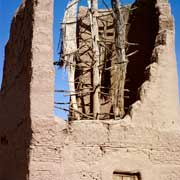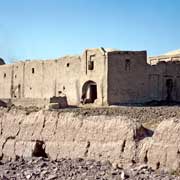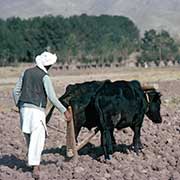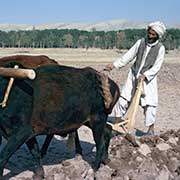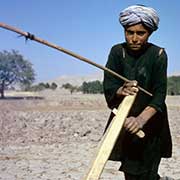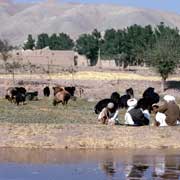Photos from Afghanistan
Around Herat, western Afghanistan
you may then send it as a postcard if you wish.
Just outside the city is the Musallah Complex, founded by Empress Gawhar Shad, the wife of Timurid ruler Shah Rukh (1405-1447) in 1417. The madrasa (theological school) was probably built in 1417 and a mosque in 1426. Sultan Husain’s Madrasa was most likely built around 1493. In 1863, the tops of the minarets were destroyed by artillery fire. In 1885, Amir ’Abd ar-Rahman (1880-1901), the British supported Amir of Afghanistan, razed the ruins in an attempt to prevent its use as a base by the Russian army. The four huge broken minarets are all that remains of the madrasa.
In the shadow of those minarets were the black tents of a family of Kuchi nomads. Kuchis (from the Persian word Koch meaning “migration”), are Pashtun nomads, mostly from the Ghilzai, Kakar, Lodi, Ahmadzai as well as some Durrani tribes. Expert carpet weavers, the women do not wear the all-enveloping “chaderi” or “burqa”. There are three million Kuchis in Afghanistan, with at least 60% remaining fully nomadic. They have however suffered greatly in the past two decades of war and destruction; for most Kuchi life means poverty, war, shrinking access to land, ethnic tensions and leftover land mines.



